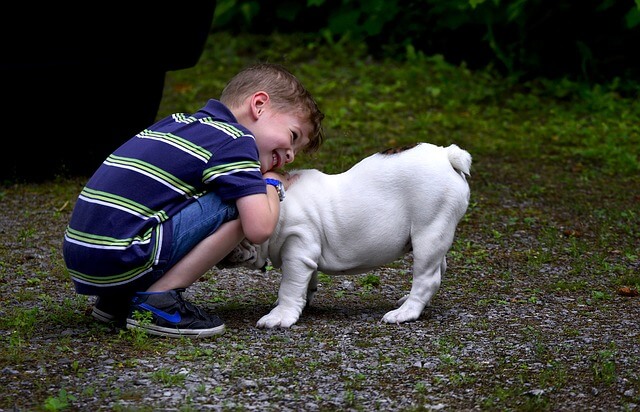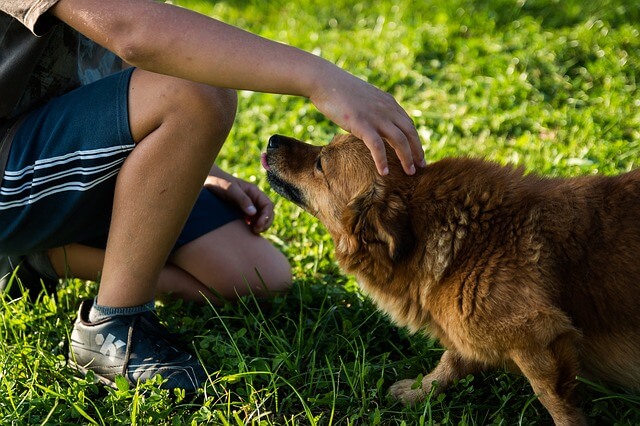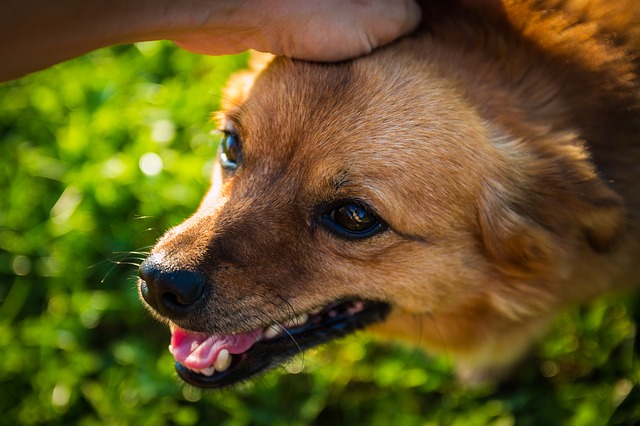With the large number of dogs that now live in urban settings where they come in daily contact with dozens of people, it’s not really surprising (though it is sad) that dog bites are on the rise. Approximately 4.7 million dog bites happen in the U.S. each year. 50% of those were children under the age of 12 years (www.Americanhumane.org).
Just because a dog lives in the city does not mean it is comfortable with strangers, children in particular. A lot of dogs just can’t stand kids. They are small, move erratically, stare, and often grab and push. Unfortunately, when an incident does happen, the dog is automatically to blame and they pay the price. Sometimes, with their life.
Often the situation could have been different, and disaster avoided, if both dog owner and child followed general protocol and guidelines when out in public.

What Your Child Needs to Know About Approaching a Dog
1. Don’t run up to a dog, whether from the front of behind. This can startle and cause even a friendly dog to bite.
2. Approach from the front, calmly and quietly, stopping out of the dog’s reach.
3. Don’t assume the dog is friendly. If you do not know the dog, operate under the assumption it’s not friendly. A WAGGING TAIL DOES NOT ALWAYS MEAN THE DOG IS HAPPY.
4. Do ask the owner if the dog is friendly and can be petted. Then, teach your children to respect the answer. NO MEANS NO.
5. Don’t go up to an unattended dog or one that is walking by. Some dog owners tie their dogs to a post or chair when the go inside a store or restaurant. There is no way to know for sure if the dog will bite or not. Teach your child to stay out of reach of any dog left alone or walking down the street with a preoccupied owner. Don’t reach out and touch a dog as it walks past.

Proper Petting Protocol
If the owner says it’s okay to pet their dog, do not allow your child to just run up and pat them on the head. Teach your child the proper protocol.
1. Approach a dog calmly and quietly. A non-direct angle is best.
2. Do not stare in their eyes
3. Do not immediately pat them on the head.
4. Let the dog sniff your hand (the parent) first. If the dog seems friendly, have your child do the same.
5. Pet the dog under the chin and on the chest or back area. Avoid the top of the head.
6. If the dog shies away, flinches, growls, freezes, or shows any sign of anxiety, immediately move away, but remain calm!
Parents, learn to read a dog’s body language here, and then show your children.
What Every Dog Owner Needs To Know About Approaching Strangers
It is your responsibly to know your dog! The child approaching only sees a cute doggy, they have no concept of reactivity, aggressiveness, or fear in dogs. If you know your dog is not child-friendly, do not let the child get close enough for there to be any danger. Keep an eye out for a yellow ribbon – a sign that the dog may not be ready to socialize. (Learn more about it here.)

For the unfriendly dog:
1.Be Vigilant! Watch for people who may try and approach from all sides.
2. Remain Calm. If you get upset immediately, so will your dog. Take action quickly, but make sure your actions are deliberate and calm.
3. Tell the child to stop
4. Pull your dog back
5. Step in between.
6. Move away. If possible, just move away and avoid the whole situation. If you are somewhere you cannot move, you need to get in between and make sure the child is not in harm’s way
7. Muzzle. If your dog is a biter and you need to bring it out in public (for walks, a visit to the vet or groomer’s etc.) use a muzzle. This is a clear signal that your dog is not friendly and acts as a red flag for approaching children.
Following these simple rules for both children and dog owners can help reduce the number of dog biting incidents. Better safe than sorry is the perfect adage for these situations.
